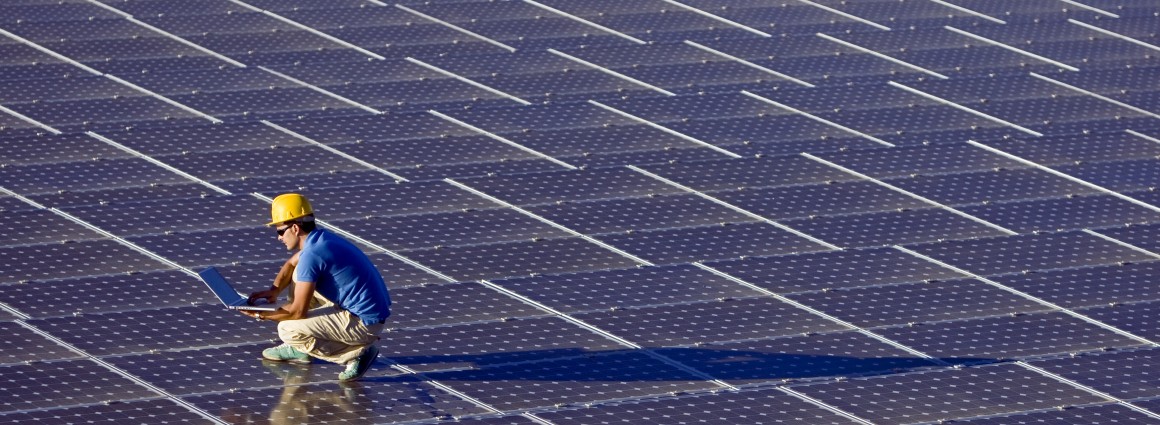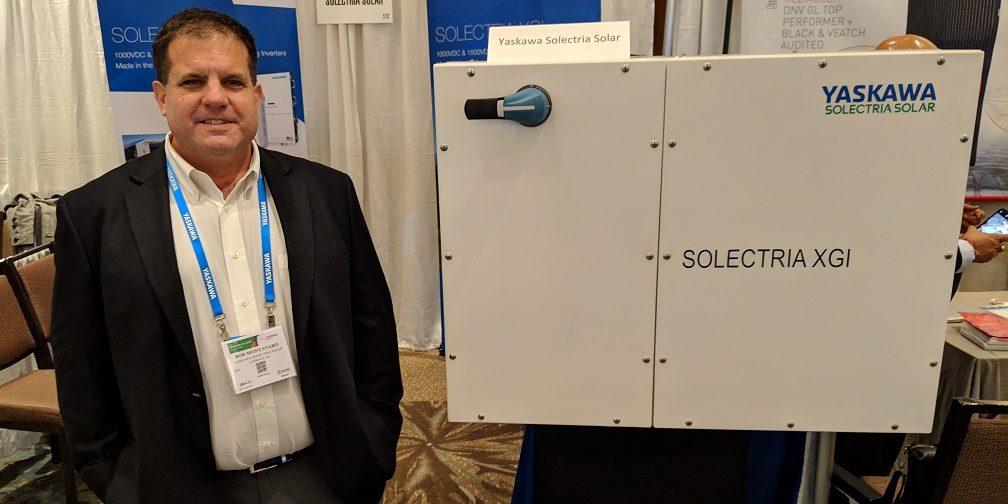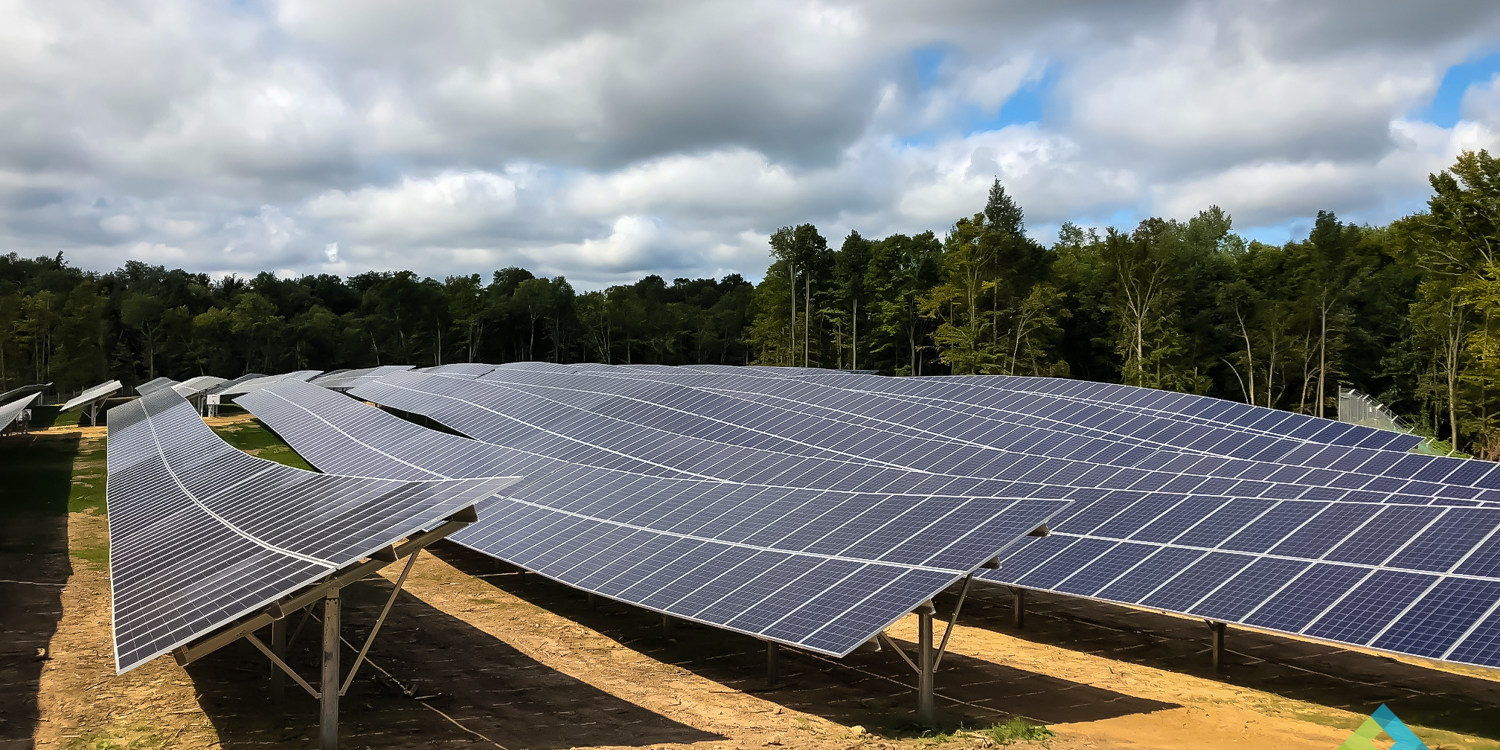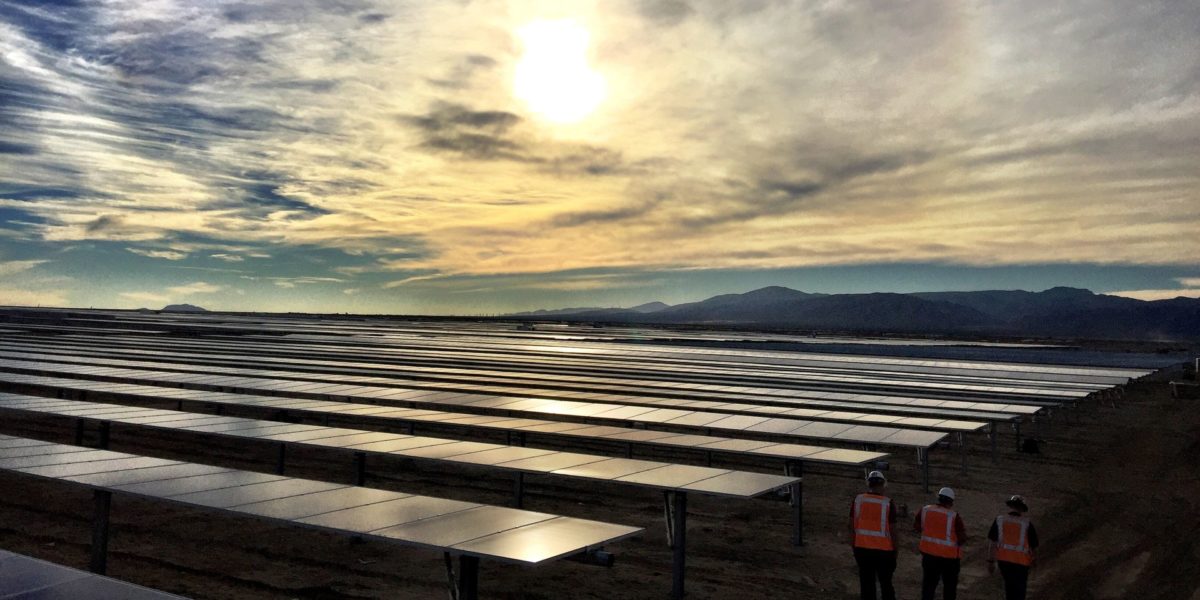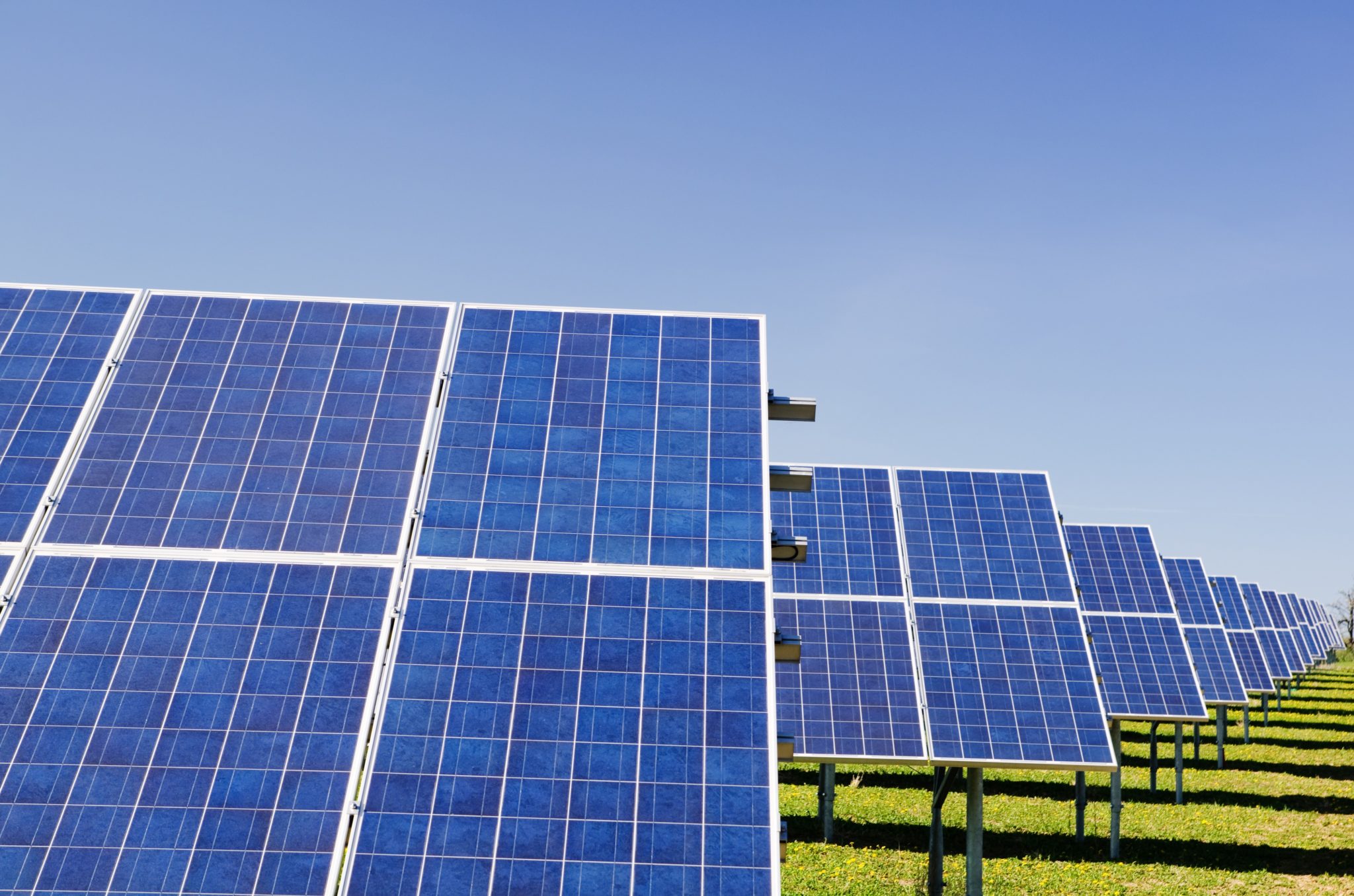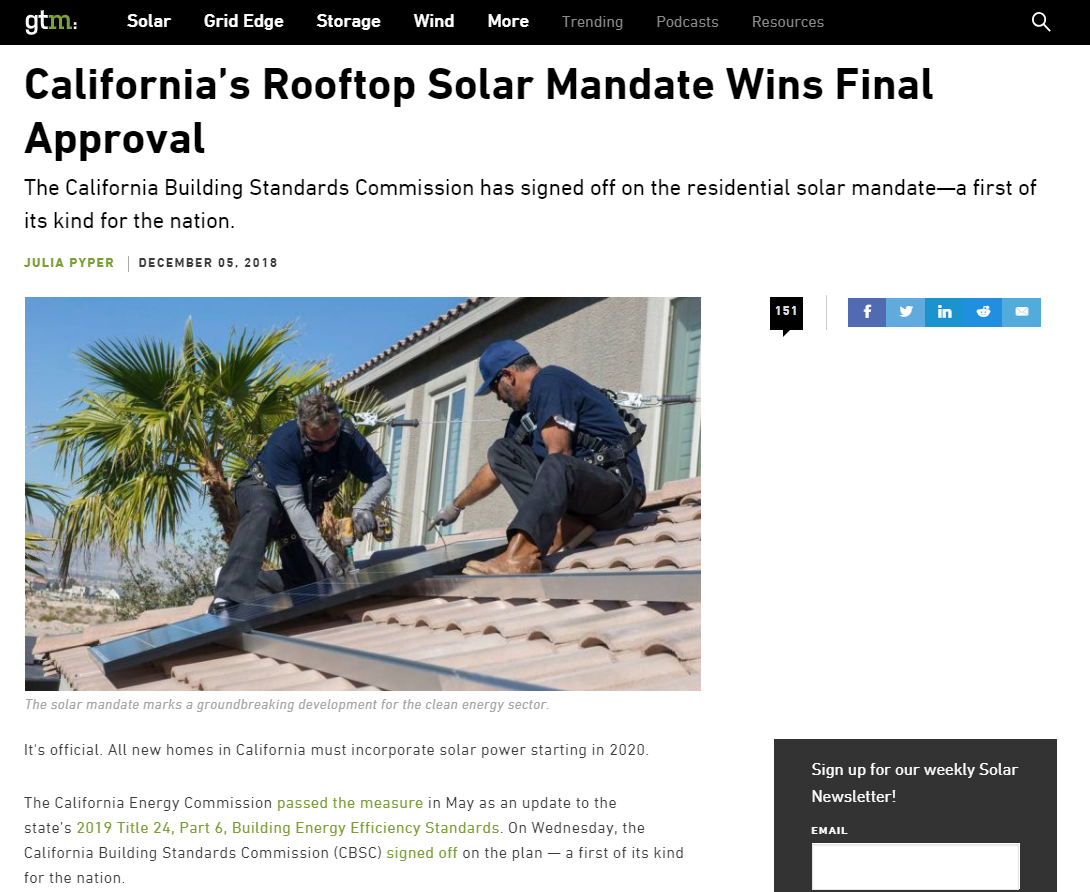Congratulations Jean Family!
Mar 22, 2019 9:26:49 AM / by Andrew Breiter-Wu posted in Community, Solar Access to All, Residential Solar, MA SMART Program, Massachusetts, Boston, Case Study
Dr. Solar goes from zero to 1 GW in two projects
Mar 10, 2019 9:39:44 PM / by Christian Roselund, pv magazine posted in Solar Development, Property Owners, United States, Markets, Utility-Scale PV, Business, Texas, Finance
Dr. Miguel Oneto has developed a 682 MWdc solar power project in Childress County, Texas. The project is the second by the new developer, following a 324 MWdc project under construction nearby.
U.S. Department of Energy
It’s a story that would only happen in Texas, where everything is a little bit bigger – including the business opportunities.
In August of last year, pv magazine reported on a 240 MWac / 324 MWdc solar power project that broke ground in northern Texas. A couple of months later, the developer reached out to start a conversation with us about the next project he was developing, and gave us a bit of a background story.
Attend Our President's Panel Discussion at BuildingEnergy Boston 2019 called Solar Access for the Underserved #BE19
Feb 24, 2019 7:44:00 PM / by Andrew Breiter-Wu posted in Exterior Lease, Solar Subscription, Land Lease, Community, Solar Access to All, Commercial Solar, Conferences
The BuildingEnergy Boston Conference + Trade Show is the region's leading event for professionals and practitioners in the fields of high-performance building, energy efficiency, and renewable energy. It brings more than 1,500 industry leaders and emerging professionals together to learn from and share ideas with each other. This year's event will be Thursday and Friday, March 14-15, 2019 at the Westin Boston Waterfront.
The theme of BuildingEnergy Boston 2019 is Know-How. This year's Conference Chairs are developing a session line-up that focuses on practical skills and immediately applicable knowledge—the innovations we're working on now, our recent lessons learned, the skills we wish all our colleagues had.
Throughout the country, we have seen rapid growth in the residential solar space supported by a wide range of industry players and solar offerings. However, growth has been slow in our low and moderate-income communities where the benefits of solar and energy efficiency services are more impactful. The goal of this session is to showcase various state approaches to bringing solar and energy efficiency resources to underserved communities and educate attendees about how these innovative solutions have been effective in doing so. We will highlight programs that offer a solar lease, solar loan, and community solar offerings.
Changes to California's Utility Rates are Disrupting the Economics of Commercial and Industrial Solar
Feb 20, 2019 8:44:00 AM / by Colin Neagle, Enel X posted in Commercial Solar, California, Utilities, Energy Storage, Utility-Scale PV, Time-of-Use, Demand Management, San Diego Gas & Electric (SDG&E), Southern California Edison (SCE), Pacific Gas & Electric (PG&E)
This article is an excerpt from the new whitepaper published by Microgrid Knowledge and Enel X North America, California’s Changing Time-of-Use Rates: Calculating the Impact on Behind-the-Meter Solar PV and Energy Storage.
For utilities, electricity is generally more expensive and complex to deliver when demand is high. To help cover these costs, California’s utilities have traditionally imposed time-of-use (TOU) rates, which created a daily schedule that applies different prices for power based on demand trends on the grid. When demand is highest, prices are highest under TOU rates.
On the floor in picture form at Solar Power Northeast #SolarNE
Feb 17, 2019 7:55:00 AM / by John Weaver, pv magazine posted in Massachusetts, United States, Balance of Systems, Events, Modules, O&M, Conferences, Inverters, Products, Solar Industry, Boston
While the Super Bowl victory parade rolled by, solar energy professionals shook hands, shared stories, made deals and visited more than 80 industry exhibitions on the floor in Boston, Massachusetts.
Is large scale solar feasible in the Northeast? #SolarNE
Feb 10, 2019 8:00:00 AM / by Tim Sylvia, pv magazine posted in Exterior Lease, Solar Energy, Solar, Community, Solar Development, MA SMART Program, Massachusetts, Policy, Utilities, Vermont, Energy Storage, Markets, Utility-Scale PV, Connecticut, Maine, New Hampshire, New York, Rhode Island
At Solar Power Northeast representatives from Cypress Creek, Stem and Kearsage Energy discussed the possibilities and limitations of bringing big solar to New York and New England.
Forefront Power
“500 MW might actually cover all of Rhode Island,” joked Paul Raducha, senior developer for Kearsage energy, but there’s real sentiment behind his quip. While states like California, Nevada and Arizona have seen utility-scale development at mind boggling scales, there are few massive solar plants yet on the East Coast north of Virginia.
Now let’s be honest, nobody is asking for or realistically expecting a multitude of 100 or more MW plants in New England and New York. So what is there to expect?
9 new state governors committing to solar and renewables
Jan 9, 2019 9:00:00 AM / by Andrew Breiter-Wu posted in Renewable Energy, Solar, Policy, United States, Politics
Contrary to President Trump, more and more U.S. states are setting their sights on an ambitious expansion of solar and other renewables. Five new state governors elected in the midterms are committed to achieving 100% renewable electricity. Several others are also pro-clean energy and pro-solar.
Solar tsunami
Jan 7, 2019 9:00:00 AM / by Christian Roselund, pv magazine posted in News, Renewable Energy, Solar Energy, Solar, Energy, Solar Development, Residential Solar, Commercial Solar, Solar Finance, Utilities, United States
Developers have applied to build 139 GWac of large-scale solar projects in the territory of six grid operators – around five times what is currently online across the country – and that figure doesn’t even cover the entire United States. By any metric, we are looking at an unprecedented boom in solar development over the next five years.
Image: NREL - Hit me with your Sunshot
Some of it is the pending drop-down of the Investment Tax Credit from the end of 2019 through the end of 2023. Some of it is a series of decisions by states, cities and corporations to decarbonize their electricity supply, and to use solar as a main means of doing this. And some of it is the continual decline in PV system prices, which makes large-scale solar the cheapest form of new generation in much of the United States.
But whatever the cause, there is an unprecedented, massive volume of solar projects that is underway in the United States. Research conducted by pv magazine USA has uncovered more than 139 GWac of solar projects which have applied for interconnection with six grid operators (CAISO, NYISO, ISO-NE, MISO, PJM, ERCOT) by the end of December 2018, spanning the Northeast, Midwest, California and Texas.
For perspective, Wood Mackenzie estimates that there was only 34 GWdc of large-scale solar online at the end in the third quarter of 2018. When you convert that figure to AC power, it means that the new capacity being considered is around five times as large.
There are other reports looking at upcoming capacity, and they do vary greatly – which ought remind us all that much of what is in a queue won’t move forward. ISO New England estimates that 70% of the projects in its queue never see the light of day.
However, more than 15 GWac of solar projects in these six grids either already hold interconnection agreements, or have entered the engineering and procurement phase.* The largest portion of these is in California, but there are also more than 4 GWac of projects in Texas that hold interconnection agreements.
Our investigation showed solar project development going truly national. In fact, the California Independent System Operator (CAISO) grid has a smaller volume of solar projects in its interconnection queue than the Midcontinent System Operator (MISO), Electricity Reliability Council of Texas (ERCOT) or PJM Interconnection, each of which have more than 32 GWac of solar projects in their queue. Unlike California, the large majority of project volume in all three has been proposed in 2017 and 2018 and these regions had all seen limited large-scale solar market development until a few years ago.
Even more to come
It is important to remember that these grids don’t cover the entire United States, and as such this 139 GWac does not include projects in the majority of the South, Mountain West, Pacific Northwest and Plains States. And we aren’t seeing these massive projects only in databases, either. As documented in pv magazine USA’s year-end coverage, we have found large solar projects either planned or under construction in 17 states that have not had substantial solar markets to date.
The signals of a boom to come in the U.S. solar market is reinforced by other data sources. The Federal Energy Regulatory Commission’s (FERC) monthly Energy Infrastructure Update(located under Energy Infrastructure tab) gives estimates of future capacity, and the latest report shows 63 GWac of proposed solar project additions before the end of 2021.
A quarterly report by Stephanie Tsao and Ellen Meyers of S&P Global Market Intelligenceestimates that the U.S. utility scale solar project pipeline through 2022 has expanded to 33.9 GWac.
In these estimates by S&P, grid operators reports and FERC, we are only talking about large utility-scale projects. These numbers do not include smaller systems such as rooftop solar either on the homes or businesses of utility customers. Data from other projections suggest that another 4-5 GWdc is coming from residential and commercial solar combined. Adding that volume to the S&P projections with a DC:AC ratio of 1.25:1 applied, suggests that the United States might build 18 GWdc of solar power in 2019, and just over 19 GWdc in 2020.
Energy storage boom
The six grid operator queues we investigated also showed more than 16 GW of battery projects which have filed for interconnection. And this number should not be too surprising to anyone who is watching the meteoric growth of energy storage.
Per the US Energy Storage Monitor, from Wood Mackenzie Renewables & Power along with the Energy Storage Association (ESA), total energy storage deployed expanded by 60% in terms of energy and 300% on a power basis in the third quarter of 2018 versus the prior year. Going out mostly until 2023, the report noted that the front of the meter pipeline expanded to approximately 33 GW of power.
The next five years are going to be truly massive for solar and energy storage. Hold on to your seats.
*Editor’s note: PJM Interconnection did not have a list of projects with interconnection agreements, but did list projects which had entered the engineering & procurement stage of development.
This article originally appeared on pv-magazine-usa.com, and has been republished with permission by pv magazine (www.pv-magazine.com and www.pv-magazine-usa.com).
11 SMART questions answered: the facts on Massachusetts’ new solar program
Dec 17, 2018 8:05:00 PM / by Tim Cronin posted in Exterior Lease, Solar Subscription, Land Lease, Community, Solar Development, Solar Access to All, Residential Solar, Commercial Solar, MA SMART Program, Massachusetts, Roof Lease, Policy, Utilities
GTM: California’s Rooftop Solar Mandate Wins Final Approval
Dec 11, 2018 8:00:00 AM / by Andrew Breiter-Wu posted in News, Real Estate, Property Owners, Residential Solar, California, New Construction



